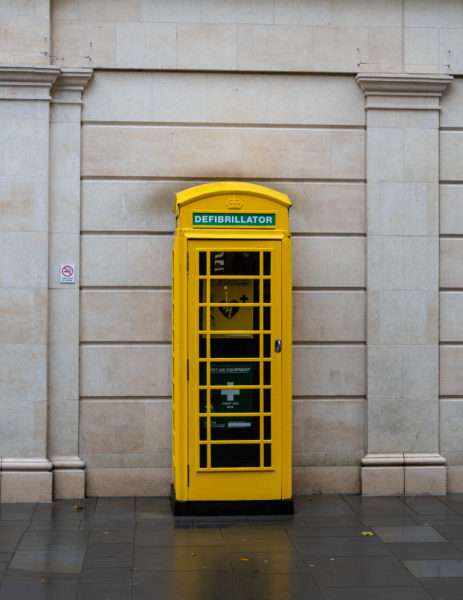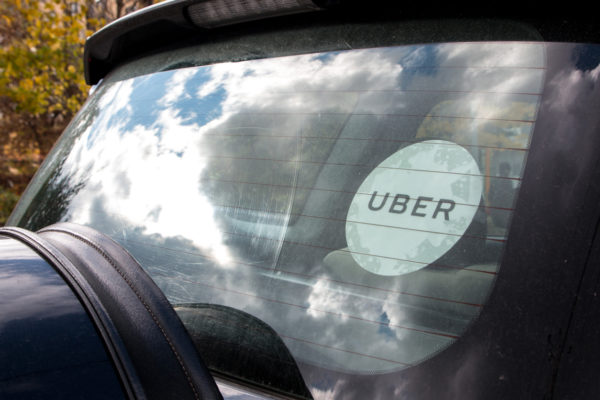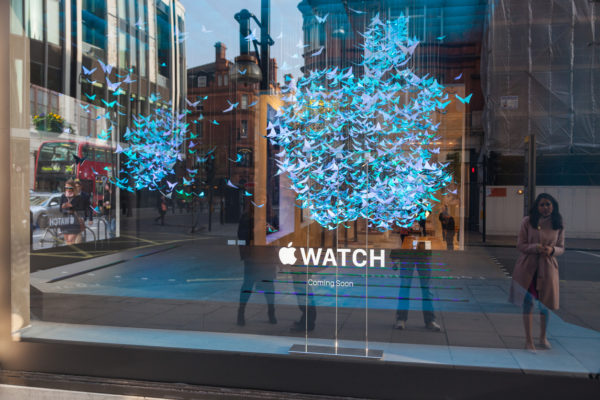How technology disruption challenges the urban commons and individual
This blog by Professor Michael Keith, Coordinator of the Urban Transformations portfolio and Principal Investigator of the PEAK Urban project, is based on a paper presented by Michael Keith to the World Urban Forum on 10 February 2020. It has been reposted from the PEAK Urban website.
The defibrillator, Apple Watch and Uber
As we’ve heard countless times before, technological change disrupts. These disruptions — to society; to behaviours; to the built environment — have uncertain consequences, generating substantial benefits and unexpected challenges. To maximise the former and mitigate the latter, cities must balance forces that pull in different directions; recognise the trade-offs of balancing such demands; and be flexible and astute enough to capture the opportunities technological change can offer.
This surfaces different forms of urban commons, the collective tangible and intangible resources, like the climate, air quality, open space and culture that we all share or utilize. Yet the city depends on the freedoms of individuals to think differently, to innovate; and to experiment, leveraging its density as a means of contact. Equally, in these forms of experimentation, the ability to monetise ideas, practices and this technological disruption mentioned above demands a security by prize of property and market reward. In other words: we need to share, but also, prosper.
Technology disrupts through dislocating the infrastructure of one or more parts of the urban system. But a city is never just a singular system; rather, it is a multiplicity, invariably a system of systems: health systems, economic systems, social systems, systems of flow and metabolic systems. All are interdependent in the urban context, meaning that cities are fundamentally open rather than closed systems. Every piece of the systems themselves is subject to change, which holds massive consequences for what a city looks like, or provides.
These increasing tensions between the commons, individual rights and property can be illustrated by three moments of modern technological advance: the defibrillator, the Apple Watch, and Uber. Each of these objects is a story of disruption, and contain three facets of complex open systems that help us to better understand the power of technological change to shape urban futures.
Disruption 1: Emergence and the defibrillator
Open systems are characterised by emergence, a concept that crosses the humanities, natural sciences and social sciences. It is the property of complex systems that reconfigures the relations between the constitutive elements of the system itself; individual parts do not hold certain properties, but together as a system, they do.
Therefore, emergence qualifies the power of prediction. If we recognise that repetition is the property of stable systems, the attempt to model and project from trends remains a powerful tool for the analysis of human behaviour and identifying pattern — especially in our cities, which are increasingly rich in data. Paradoxically, in the 21st century, the exponential rise in our ability to predict behaviour in real time means that we know more and more about the short term. Yet due to the power and pace that disruptive technologies are changing the speed and fundamentals of city logics, we know less and less about the longer term beyond a matter of two to three decades at most. Consequently, the growth in big data both empowers the new urban sciences and also sets horizons on their ability to predict city futures.
Acknowledging that prediction lasts no longer than the stability of the system itself is a matter of scientific accuracy, or, rather, a recognition of the imperative at hand to identify the mathematics of disequilibrium in cities alongside assertions and observations of tendency towards equilibrium in system working. Balancing the power of the former with the humility of the latter is a matter of judgement that invokes questions of scale and temporality: how much will change, and what form will follow? What detail of divergence do we search for, and the length of time over which we measure the urban system?

Understanding that emergent systems have the power to undermine their own long-term stability — we can predict, and ultimately end up changing systems entirely — demands an ethical as well as epistemological engagement with real world claims to know the metropolis, and make scientific observations about how we think about urban futures. We have to garner a greater awareness of what is changing our cities, and what will be changed.
Over the last decade, new technology and innovation created defibrillators that were cheap enough for wider public use, and they then rapidly proliferated across multiple locations in cities of much of the globe. Between 2005 and 2013, the number of defibrillators in Japan alone went from just below 11,000 to over 400,000. That dispersion has huge implications for public health: for every minute that goes by where a victim of sudden cardiac arrest does not receive treatment, their chance of survival decreases by 10%. If defibrillation occurs within 1 minute of the victim collapsing, the victim’s survival rate increases to 90%.
The defibrillator consequently disrupts the rhythms of speed in the city and changes the relationship between hospitals and patients suffering major cardiac incidents. This reflects the increasing importance of public access to defibrillators more than blue light services sending ambulances from hospitals across the surface of the city through commonly congested roads. Viewed through the lenses of emergence, as described, it drastically reconfigures a longstanding part of the urban system (providing emergency services over time and space), and the power relations at play (stationary hospitals and healthcare clinics), thus rethinking the system entirely.
Disruption 2: Path dependency, lock-ins and Uber
But one problem that public health systems face is that technology tends to move faster than real estate markets. In the Global North, the geographical spread of primary care facilities can be defined optimally for stroke, cancer or respiratory care, but this definition will always be subject to — and handicapped by — both the optimal distribution of medical real estate and the capacity of new technologies. In China, the liberalization process after 1978 led to the decline of public investment in primary care and a massive increase in private insurance and the savings needed to pay for insurance[1]. But excessive savings diminish consumption, which undermines economic growth, and more recently — for reasons that are both economic and egalitarian — the pooled risk of increased health insurance in China aims to reduce providential savings and increase domestic spending and growth. In India, the Delhi city government has taken a more pragmatic approach altogether, adopting the logic of urban squatting to claim the city as a commons for innovative Mohalla clinics, or ‘pop up’ mobile constructions addressing immediate health needs in extemporised structures. The particular histories of China and Europe show divergent ways in which health systems view the city as urban commons but can become locked in to geographically and culturally specific distributions of real estate reflecting existing property logics and temporal rhythms and perpetuate outdated responses to yesterday’s technological fixes.

That brings us to Uber. Cities globally have been characterised as ‘locked in’ to automobile ownership, prompting urban sprawl, which in turn lowered densities through suburban flight. Ridesharing apps like Uber are at times seen as promoting solutions to the dependency on private car ownership, but such apps depend in part on the structure (and the path dependencies) of city markets. In unregulated city markets such as Johannesburg and Mexico City, Uber disrupts rapidly; in more regulated markets such as Paris, New York or London, less so. The company itself monetises the app through the temporalities of financialised investment that speculates on the mobilities of future cities; in a sense, they’re guessing (and betting on) how cities will adapt to new forms of mobility. In 2019, Uber recorded the largest-ever single quarterly loss of $5.32 billion dollars. Investors took interest in the propensity of the disruption to monetise different data-driven modes of mobility down the line, mediated by products such as food and services delivered by Uber’s pioneering development of driverless shared vehicles.
Yet as we’re seeing more and more, data is the new oil: its future is pegged in uncertainty and unforeseen costs. Uber’s driverless cars could generate more sprawl if they create comfortable working environments for longer rides, or potentially more dense urban living if they encourage people to value the freedoms of proximity to central city facilities, mediated by easier mobility, creating new environmental challenges that locked-in cities must be ready for. How such mobility futures might shape future cities depends on the manner in which the technologies are regulated and nudge human behaviour of tomorrow’s ‘cityzens’, which leads to the third and final facet of open systems: the behavioural adoption of different technologies.
Disruption 3: Adoption, commensuration, and the Apple Watch
On March 18, 2018, Elaine Herzberg was alleged to be the first pedestrian mortality of an autonomous vehicle when struck by a self-driving Uber test vehicle in Tempe, Arizona. Driverless cars, of course, generate new ethical dilemmas. How do we calculate their actuarial risk and people’s response to their presence in tomorrow’s cities? How do we value the lives of the jaywalking pedestrians, the wobbling cyclist, and the elderly or young in moral trolley dilemmas for the 21st century when sharing streets with autonomous vehicles? Technological disruption on a scale this great inevitably raises such ethical as well as behavioural and economic questions.
Impacts of technological disruptions depend on how much behaviour changes or, at times, how much behaviour can be ‘nudged’ to change. The Apple Watch is an example of this; the device nudges people to measure exercise regimes to promote healthy lives. At the same time, private insurance companies are incentivising self-monitoring through such devices. In the UK, one company is offering to pay for a £350 Apple Watch as part of a deal that funds private health insurance and then registers activity data with the company. This all may appear innocent, at least until the data collected by the insurance company aggregates data upwards, but, also, personalises such data downwards, translating it into measures of personalised actuarial risk and premium payment levels for the insurance company. In this context, actuarial risk serves as a rational data calculus for private insurance (don’t forget: data is oil), but also simultaneously resurfaces a public concern for regulation of corporate involvement in public health.
How do we reconcile these two issues: the personal rights of the individual, as well as the commodity value of the big data they contribute to with devices such as the Apple Watch? In part this invokes measurement of different regimes of value and worth, and how we attempt to make them commensurable. How do we prioritise competing interests of mobility, public health, economic prosperity, or alternative measures of social need? The overlap of ethical judgements, economic demands, collective needs and individual rights makes the trade-offs involved in such commensuration visible.
Context Matters
Using these technological disruptions as case studies, complex systems thinking demonstrates why seeing like a city demands recognition of specific geographies and histories, as well as tested path dependencies, or what happens when city systems of the past and present do not resemble future systems. It opens contextual opportunities of place that render bespoke low-tech ‘clumsy’ solutions to ‘wicked’ convoluted urban problems more plausible. Cities of the Global South have the potential to leapfrog the 20th century lock-ins of car-based urbanism and wasteful city metabolisms of water and waste. Equally, varied histories of underdevelopment have different weights in specific parts of the world; alternative visions of ‘the good life’ balance the imperatives of the urban commons — its infrastructure, and regimes of rights and freedoms — in vastly divergent ways.
In other words: context matters. But what these scenarios share is a recognition of the powers of the new urban sciences and the capacity to predict in real time (P); the contingencies of emergence in complex systems (E), which are adopted differently according to distinct local systems of commensuration (A); and thus emphasize an experimental disposition to urban futures that demands innovative knowledge exchange across urban systems (K). As I’ve suggested in a previous blog this disposition of ‘PEAK Urban’ creates a framework through which technological change might be harnessed by cities that are reflexive and flexible in their response to disruption, as well as both optimistic and realistic about the propensity for technological change to shape their paths forward.
